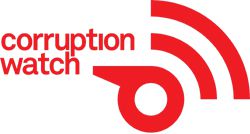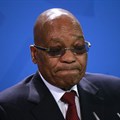Zondo names main players in Eskom capture

The commission’s latest report, released on Friday, has found that the Guptas earmarked Eskom for capture, with the help of former president Jacob Zuma and several of its board members and executive managers. Zondo details a scheme by the Guptas to place pliable individuals in strategic positions both in the board and in management, to advance their agenda.
Zuma central to state capture scheme
“The evidence proves a scheme by the Guptas to capture Eskom, install the Guptas’ selected officials in strategic positions within Eskom as members of the board, the committees of the board and the executives, and then divert Eskom's assets to the Guptas' financial advantage,” writes Zondo.
“Central to the Guptas’ scheme of state capture was [former] president [Jacob] Zuma, who the Guptas must have identified at a very early stage as somebody whose character was such that they could use him against the people of South Africa, his own country and his own government, to advance their own business interests...”
Zondo continues: “...President Zuma readily opened the doors for the Guptas to go into the SOEs and help themselves to the money and assets of the people of South Africa. Mr Zuma did this by appointing Mr Brian Molefe as Group CEO of Transnet after he had discussed the matter with them.”
Strategic appointments
Brian Molefe was later seconded from Transnet to Eskom, in April 2015, where he stayed until his resignation amid a public protector investigation into allegations of corruption.
Brown’s bypassing of the traditional procedure of the Department of Public Enterprises (DPE) to pool candidates from a database of skilled professionals did not escape scrutiny. According to Zondo, the former minister’s inability to account truthfully for her actions raises suspicions. He notes discrepancies in Brown’s account of her appointment process during an investigation by Fundudzi, and her testimony before the commission in 2021. While she insisted to Fundudzi that all protocols were followed in the DPE’s appointment process, she told the commission that she made a decision to advertise for nominations for board seats so as to open the process up to the public and attract suitable candidates.
A further finding is that while in the process of recruiting and appointing the 2014 directors, Brown was in constant communication with Gupta associate Salim Essa for about four months. “The commission obtained cellphone records relating to, among others, Mr Salim Essa and Minister Lynn Brown. These showed that from November 2014 to March 2015 there had been several cellphone calls that had been made between Mr Essa and Minister Lynne Brown. November 2014 was the month that preceded the month of the appointment of a new Board of Directors for Eskom.
“On the conspectus of all the evidence, Ms Lynne Brown’s posture of innocence must be rejected. The evidence clearly shows that she was part of a scheme to capture Eskom,” Zondo notes.
Removal of top execs
One of the first tasks of the new board involved the suspension and later removal of Eskom’s top executives in March 2015. Zondo has concluded that this was done under the guise of launching an enquiry into their performance at the entity, and was a ruse that cost the company over R18-million in eventual separation packages that had to be granted to former CEO Tshediso Matona, former CFO Tsholofelo Molefe, and former head of group capital Dan Marokane. The only executive to return to Eskom after having been suspended along with the three – Matshela Koko – did so under suspicious circumstances, and because he too was part of the Gupta scheme, hence he was required to play along.
Upon his return in July of that year, Koko brought with him project plans that appeared to be designed for the appointment of Gupta-linked companies Regiments, and later Trillian, as business development partners to larger contractor McKinsey and Company, and would cost Eskom millions of rands, Zondo finds.
Trickery
He notes: “It is plain that Mr Koko’s suspension was a ruse. That is why on the 10th March 2015 he was busy with Mr Salim Essa at Melrose Arch seeking to identify Eskom officials who could act in the positions that would become temporarily vacant the following day when the executives, including Mr Koko, would be suspended. The Guptas and their associates must have identified Mr Koko much earlier as someone who could work with them to advance their capture of Eskom and, therefore, their business interests.
“The primary purpose of the scheme was to install Mr Brian Molefe in Eskom as its CEO and Mr Anoj Singh as the Financial Director because those who devised and implemented the scheme believed that Mr Brian Molefe and Mr Singh would favour the Gupta family and channel resources of Eskom towards the Gupta family.”
A month after the suspensions, in April, Brian Molefe was indeed seconded to Eskom from Transnet, and followed later by Singh. Zondo has identified both men as having been instrumental in furthering the capture agenda at Transnet too.
Glencore mine acquisition
Once at Eskom, they allegedly railroaded international company Glencore into selling its Optimum mine to Gupta-owned Tegeta Resources, despite the latter not being in a good financial position to buy. The funds needed by Tegeta to make due on the purchase would later come from Eskom, signed off by Molefe and Singh, in the form of a pre-payment for the supply of coal at R659m, and later a guarantee of R1.6bn, approved by the board in circumstances where they were misled on the true nature of the transaction, Zondo concluded.
“These were made with the single purpose of ensuring that the Guptas' deal in terms of which they acquired the Glencore coal interests did not fall through for want of finance on the part of the Guptas.
“I cannot accept that the payment and the guarantee were for coal to be delivered. Once it is accepted that Messrs Molefe, Koko and Singh were Gupta agents, prepared when they were called to do so to do the Guptas' bidding, then the possibility that any of them did not know that the money was required to complete the purchase of shares transaction is small.”
This article was originally published on Corruption Watch.
Source: Corruption Watch

Corruption Watch (CW) is a non-profit organisation launched in January 2012, and operates as an independent civil society organisation with no political or business alignment. CW is an accredited Transparency International chapter that fights against the abuse of public funds, relying on the public to report corruption. These reports are an important source of information to fight corruption and hold leaders accountable for their actions.
Go to: www.corruptionwatch.org.za




























